Undergrad summer student research positions explored
The following is part of a series introducing CivMin’s undergraduate summer students to the Department and our greater community.
We explore the students’ projects, motivation and challenges, while providing insights into who they are, and what motivates them, beyond academia. It also highlights the multitude of ways summer research opportunities are approached and implemented under the guidance of our industry-leading CivMin professors.
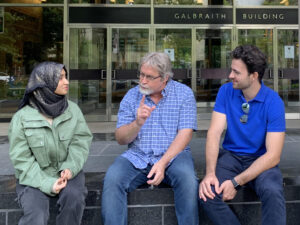
Emaan Fatima (EngSci, Year 3) and Christopher Zuccaro (CivE 2T2 + PEY, MASc candidate), both in different stages of their educational journey, found an interest in water and energy systems. With a passion for equity-based research, Emaan hopes she can help people and make a difference. Christopher began Civil Engineering with the intent of becoming a civil engineer but once he took Professor Bryan Karney‘s course, CIV 250 – Hydraulics and Hydrology, he knew he wanted to pursue a future career involving the topic of water. This summer, Emaan and Christopher are both working as research students in CivMin, under the supervision of Prof. Karney.
Tell us a bit about yourself.
Emaan Fatima: I’m an Engineering Science [EngSci] student going into my third year, and I hope to do a PEY Co-op term. I was born in Canada, then we moved to the Middle East and lived there my entire life, moving back only for 12th grade. I live in Markham and have commuted every day for two years. I chose the energy systems option for my degree and that’s why I’m doing research with Prof. Karney.
Christopher Zuccaro: I just graduated from Civil Engineering here at the University of Toronto and will be pursuing a Master of Applied Science beginning in the upcoming term [September 2023]. I did my PEY Co-op at an engineering firm called HydraTek & Associates Inc., where I worked with Prof. Karney on a project exploring the potential correlation between rainfall IDF [intensity-duration-frequency] curves and climate change. I’m from Vaughan and commute to campus every day.
What will be your role this summer and where? What types of tasks and work will you be doing? What’s the research goal?
Emaan: I’m researching hydraulics and water power systems. I’m reviewing CIV401 [the course taught by Prof. Karney], which people in energy systems take in their fourth year. I’m going through lectures and writing notes and summaries. Prof. Karney is [providing me with] books and [other materials] related to dam failures, centred on the whole notion that any one mistake we make, as engineers, could have tragic consequences. My research is mostly on dam failures and applications of fluid mechanics. I’m also doing a lot of communications-focused extracurriculars this summer. I’m the VP of Communications this year for EngSci Club and I’m also part of publications, like The Toike and am working on the social media team for F!rosh Week 2T3.
Christopher: This summer, I’ll be working with Prof. Karney and the engineering firm, HydraTek, on a research project focusing on design criteria for sanitary system infrastructure. It seems the design values pertaining to rainfall derived inflow and infiltration (RDII) are not a very good representation of [what] is seen with real data. In addition, when the current values are applied between different jurisdictions and thus, different catchment sizes, there tends to be a discontinuity between design flows. Research in this topic will help give me a head start on my upcoming Master of Applied Science [MASc] thesis and will also put me on the path to becoming an expert in the field.
I want to work towards something that makes a difference, even if it’s small.
What motivated you to work with Prof. Karney on this project?
Emaan: I’ve been really interested in equity-based research. [I want] to help people with my degree and also [be] face-to-face with the people I help. When I looked up Prof. Karney, I discovered he founded a company in Vaughan [called Hydratek] related to hydropower. Initially, I wasn’t sure if hydro and water [systems] were exactly what I wanted to focus on but [Prof. Karney’s] main goal is to help people and make systems more efficient, which is what I want to do. I want to work towards something that makes a difference, even if it’s small.
Christopher: It started in second year when I was in Prof. Karney’s CIV 250 [Hydraulics and Hydrology] course. Up until then, I was determined to become a structural engineer, which all started when I was a kid. I used to be a big fan of the show, Bob the Builder, and when I asked my dad, “Hey, what’s Bob the Builder,” he said, “That’s a civil engineer.” Smart man. So, I came to university wanting to become a structural engineer, until I took Prof. Karney’s course. I found the topic of water much more interesting and immediately decided that I didn’t want to be a structural engineer anymore. I then made the connection with Prof. Karney and applied to his company for a summer job. From there, the summer position turned into a PEY co-op, which will eventually turn into a full-time position upon completion of my master’s degree. I haven’t looked back since.
What do you foresee being your greatest challenge?
Emaan: [Prof. Karney] wants me to do a bit of graphic design – make some sketches and graphics related to his lectures. I haven’t done graphics-related work for about two years. It will be a challenge to re-learn graphics software and communications techniques. I’m also used to making pretty and concise type graphics, but for this project, clarity is of utmost importance, which is one shift in mindset I’m going to have to focus on.
Christopher: The vast amount of information out there to learn and how to determine what is relevant, what is not, where to look for credible information, and then how to organize all this into a tangible topic that you can become confident with and speak to a large group about. There are lots of journals, lots of theses from past master’s and PhD students, and textbooks too. Statistics is another challenge. Although I understand it well, there is still so much more to learn that I can see benefiting me for both my upcoming master’s and my professional career.
Have you found any favourite spots on campus?
Emaan: In terms of study spots – Myhal, fourth floor, near the lockers, there are desks – that’s one of my favourite study spots. Another one is the tables in the main lobby of GB [Galbraith Building]. It’s kind of crazy because before I even got this opportunity, I was just sitting there, and Prof. Karney tried to come in, but the door was locked and I got up to open it. I didn’t know it was him at the time, but he recognized me later. In terms of fun spots – The Pit [Sanford Fleming Atrium] is great. The EngSci Common Room is also great.
Christopher: I spent a lot of time over at Goldring Gym, that’s definitely one of my favourites. The pathway between the buildings in Knox College is also very nice. Great spot for grad pics!
Do you have any interesting hobbies or talents you’d like to share?
Emaan: I’m trying Second Cup for the first time today. I’m a huge Tim Hortons person typically.
Christopher: I have a black belt in karate, play the guitar and enjoy golfing.
Questions for Prof. Karney:
What do you hope for Chris and Emaan to achieve this summer? Takeaways?
Prof. Karney: To tell you that, I need to give you a little bit of my philosophy – my interests are very broad, so I want to do something with the summer students that overlaps with my interests but is very much aligned with theirs too. It’s about finding the sweet spot because if you love what you do, it doesn’t take discipline to do it. And I’m hoping for my students to find topics they enjoy and be self-motivated, so they achieve something that they know is good and they’re proud of. My agenda is broad enough that it can accommodate lots of different directions, but they’re both working in my main area which overlaps water and energy systems. I’m hoping they grow, they learn, and they have a good experience.
How will Chris and Emaan be contributing to this project/your research?
Prof. Karney: Most of my engineering work seeks to have real application and to make a difference in the way we do things. Chris’s work is very much in that domain. He’s going to be working with the regions of Vaughan, York and a variety of others to hopefully improve the way we design. For Emaan’s work – we’re getting near the end of my career, I’ve got endless recorded lectures, and lots of ideas I need to move towards a permanent document that will last longer than me. So [Emaan’s] working on lecture material that will help her but will also hopefully turn into a textbook before I fully retire.
Watching them develop and find that enthusiasm, be able to run with it, and learn is one of the greatest satisfactions that a person could have in their career.
Is there anything I haven’t asked you about you’d like to speak on? Final thoughts?
Prof. Karney: The glorious thing about U of T is we get students that are self-motivated and capable enough that you can give them significant challenges, and they can rise to those challenges. Watching them develop and find that enthusiasm, be able to run with it, and learn is one of the greatest satisfactions that a person could have in their career. Taking the topic that they don’t know and learning much more about it so they can get near, or even at, the frontier of knowledge in that area.
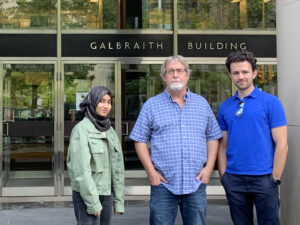
By Rachael Gallant
To read about more CivMin summer research students, go to https://civmin.utoronto.ca/introducing-civmins-ug-summer-research-students/
July 21, 2023 | rdnewsNOW
July 21, 2023 | The Canadian Press
July 19, 2023 | The Globe and Mail
Undergrad summer student research positions explored
The following is part of a series introducing CivMin’s undergraduate summer students to the Department and our greater community.
We explore the students’ projects, motivation and challenges, while providing insights into who they are, and what motivates them, beyond academia. It also highlights the multitude of ways summer research opportunities are approached and implemented under the guidance of our industry-leading CivMin professors.
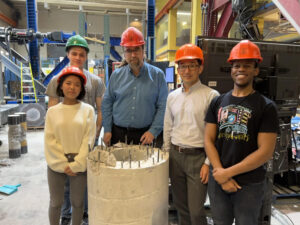
Undergraduate students Freddy Fisher, Fabio Karanja and Flora Thang all found themselves drawn to Structural Engineering. They all took Structural Analysis I (CIV214), taught by Professor Oh-Sung Kwon, and are now doing summer research under the co-supervision of Professors Kwon and Evan Bentz. Freddy, Fabio and Flora will be supporting two graduate students’ research on nuclear containment structures leakage and the impact of high temperatures on certain materials. They’ve also been assigned their own personal projects.
Tell us a bit about yourself.
Freddy Fisher: I’m American-Canadian and have lived most of my life in New York City. I have family here – moved to Toronto for U of T and am going into my third year of Civil Engineering.
Fabio Karanja: I’m an international student originally from Nairobi, Kenya, and I’m transitioning into my third year of Civil Engineering.
Flora Thang: I’m from Toronto, born and raised, and I’m going into my third year of Civil Engineering this September.
What will be your role this summer? What types of tasks and work will you be doing? What’s the research goal?
Freddy: My project is to compare two digital image correlation software and hardware systems. These systems measure the displacement field digitally by looking at how pixels move before and after a load is applied and then creating a strain field. We have a new demo system coming from Europe to compare with the older system we have [at U of T]. This data will then be compiled in a report. My personal goal is to apply my knowledge, learn, and gain insights into research at U of T and in Civil Engineering.
Fabio: I’m working with two graduate students, Liam Ma [MASc candidate] and Raymond Ma [PhD candidate] – not related – in the Structural Testing Facilities. Liam is exploring reinforced concrete walls of nuclear containment buildings and how leakage through the walls is impacted by various parameters such as crack width, length and pressure. Raymond is working on a hybrid (experimental-numerical) simulation method for structures subjected to high temperatures.
I’m mainly working with Liam to measure the flow rate coming through cracks. I’ll be 3D printing a device to be attached to concrete cylinder samples. A flow meter will be added to the 3D-printed device to measure leakage through concrete cracks. The development of this device will then be documented in a report. I hope to utilize everything I’ve learned from my first to second year during this experience.
Flora: Professor Kwon has assigned me to explore the 3D scanning of concrete cylinders’ cracked surfaces we’ll be testing. I’m looking into those technologies to see if any precedents exist at other universities or if other people have worked on similar projects.
What motivated you to work with Profs Kwon and Bentz on this project?
Freddy: I went into Civil Engineering because of my interest in buildings and structures. Structural engineering is my main interest in Civil Engineering and I’ll likely pursue it. Also, I found Structural Analysis I, which Professor Kwon taught, very interesting and challenging. I reached out to Professor Kwon and he had a position, so here I am.
Fabio: Even before I started Civil Engineering, I was interested in buildings and designing buildings. When I started, I found myself drawn to structural engineering and construction management. I pursued structural engineering research to gain a better grasp of what it’s all about. It’s also a chance to learn more about the different research functionalities and tasks. So far, I find it very fun and interesting.
Flora: My interest in Civil Engineering started more in concrete. I used to watch my dad trying to fix our home, making all these different kinds of concrete. He’d always take me to the store to read all the labels. This experience from my childhood piqued my interest in the different properties of concrete, but when I started Civil Engineering, my interest started deviating more into structures.
It requires a lot of initiative; it’s a good learning experience.
What do you foresee being the greatest challenge?
Freddy: I’d say the greatest challenge is with the independent projects. There’s a lot of technology. I’m not great with technology, but I’m learning. Also, the project requires more independence. To get help with what you’re looking for, you have to reach out to various people in the labs – who’ve been great. It requires a lot of initiative; it’s a good learning experience.
Fabio: My greatest challenge will be the independent project – learning new software, how to model in 3D, how to work with 3D printing software and making sure the device at the end of it works. I also have to assemble the device from scratch – procure the materials, get the device set up, pick the right material for 3D printing and assemble it. It’s like making a whole new type of device that hasn’t been used before. I also haven’t done a research project to this scale before, making this an interesting challenge.
Flora: My greatest challenge is getting used to all the technical terms and technology because I’ve never been exposed to so much at once. Even when I’m looking at these 3D scanners, I have to learn how they work. I have to learn what exactly we need and I have to get on top of all these terms everyone is using, and slowly start to integrate myself into this more professional world.
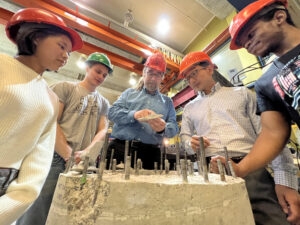
Have you found any favourite spots on campus?
Freddy: I enjoy day-to-day working in the Structural Testing Facilities [STF]. There are nice big windows, it’s pretty spacious and there are lots of cool machines. The Common Room [Civ Club] is also right above, which is nice. I like biking a lot and have been trying to explore more of campus. I’ve been going through Victoria College, around Queen’s Park.
Fabio: Every time we’re not working, we’re usually just in The Common Room. I also go to the gym, so the Goldring Centre and the Athletic Centre, and I’ve been exploring the [Bruce Kidd] Field House.
Flora: I think the [STF] are also really cool. If I get the chance, I want to explore it and the woodshop where they have all the table saws more. Since I’m a commuter, I also walk around campus a lot and try to look at the non-engineering areas.
Do you have any interesting hobbies or talents you’d like to share?
Freddy: I was in a rock band; played the saxophone. We did classical, jazz and rock.
Fabio: I play the guitar and the piano. I can also speak three languages: English, German and my native language from back home, Swahili. I learned German in high school from my mom – she went to university in Germany.
Flora: I did woodworking in high school and am unusually good at using the table saw. A lot of people were scared of it because the blade rotates in your face, but it was my thing.
A few questions for the Profs:
It is challenging to initiate and start an open-ended project without a textbook, but I think in the end it’ll be quite rewarding.
What do you hope for Fabio, Freddy and Flora to achieve this summer? Any major takeaways?
Prof. Oh-Sung Kwon: I think this is their first time working on an open-ended project. Until now, they were learning from courses, writing exams and working on assignments. It is challenging to initiate and start an open-ended project without a textbook, but I think in the end it’ll be quite rewarding.
Prof. Evan Bentz: We have special things for each one of them to learn. They’re helping graduate students doing research in the lab, but they also each have a special project. Fabio is 3D printing, Freddy is learning how to use digital image correlation and Flora is doing 3D surface scanning of individual surfaces. Each one of these things will be valuable from the research perspective and also as transferable skills.
How will Fabio, Freddy and Flora be contributing to this project/your research?
Prof. Kwon: The project we are working on is about leakage through nuclear containment structures. It probably hasn’t happened yet but if it does, we need to be able to predict how much leakage will happen. The lab activities our graduate students are working on demand a lot of support. I hope our summer students not only provide this support but also contribute to their own individual projects. We’re also in the process of acquiring a digital image correlation (DIC) system, but before we purchase, we want to test different products. That’s what Freddy is working on.
Prof. Bentz: Our two graduate students, Raymond and Liam, are busy full time so there’s not a lot of time to try out new ideas that may not work. The summer students try out these ideas and if they work, they’re part of the thesis. If they don’t work, the thesis doesn’t need it. In concept, if it works (and we think it should), it’ll pay off directly to the Master students’ theses. And if it doesn’t work, we learned stuff and we go on to new things.
Do you have any interesting hobbies or talents you’d like to share?
Prof. Kwon: I like to walk, run and play tennis. In the past two to three years, I’ve liked taking pictures of stars. It’s called astrophotography.
Prof. Bentz: I’ve been writing down what I do each day since 1990, so I have a 10,000-day history. I also started a project in April of 1990 to figure out what I’d done in the previous 20 years and I managed to hone in on most of that too.
By Rachael Gallant
Read more about our CivMin summer research students here.
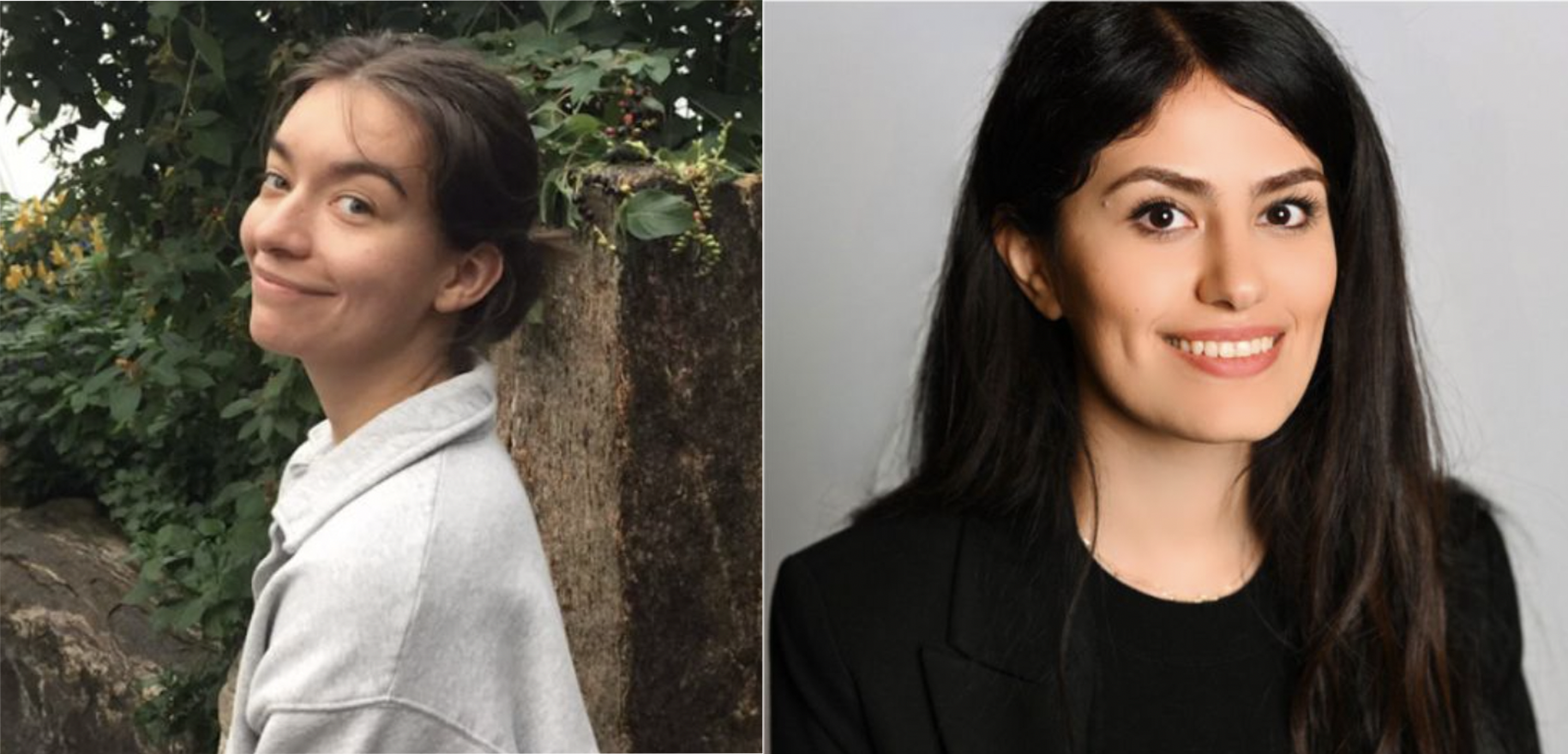
Two CivMin students have been announced as winners of the Femina Collective Scholarship for 2023.
Negin Houshmand (PhD candidate) and Katia Ossetchkina (CivE 1T8 + PEY, MASc candidate) are recognized for their outstanding achievements and dedication to the natural resource industry. A release on LinkedIn features our scholarship recipients.
The Femina Collective is committed to creating a lasting impact in the Natural Resource sector by supporting and encouraging young women to pursue careers in this field.
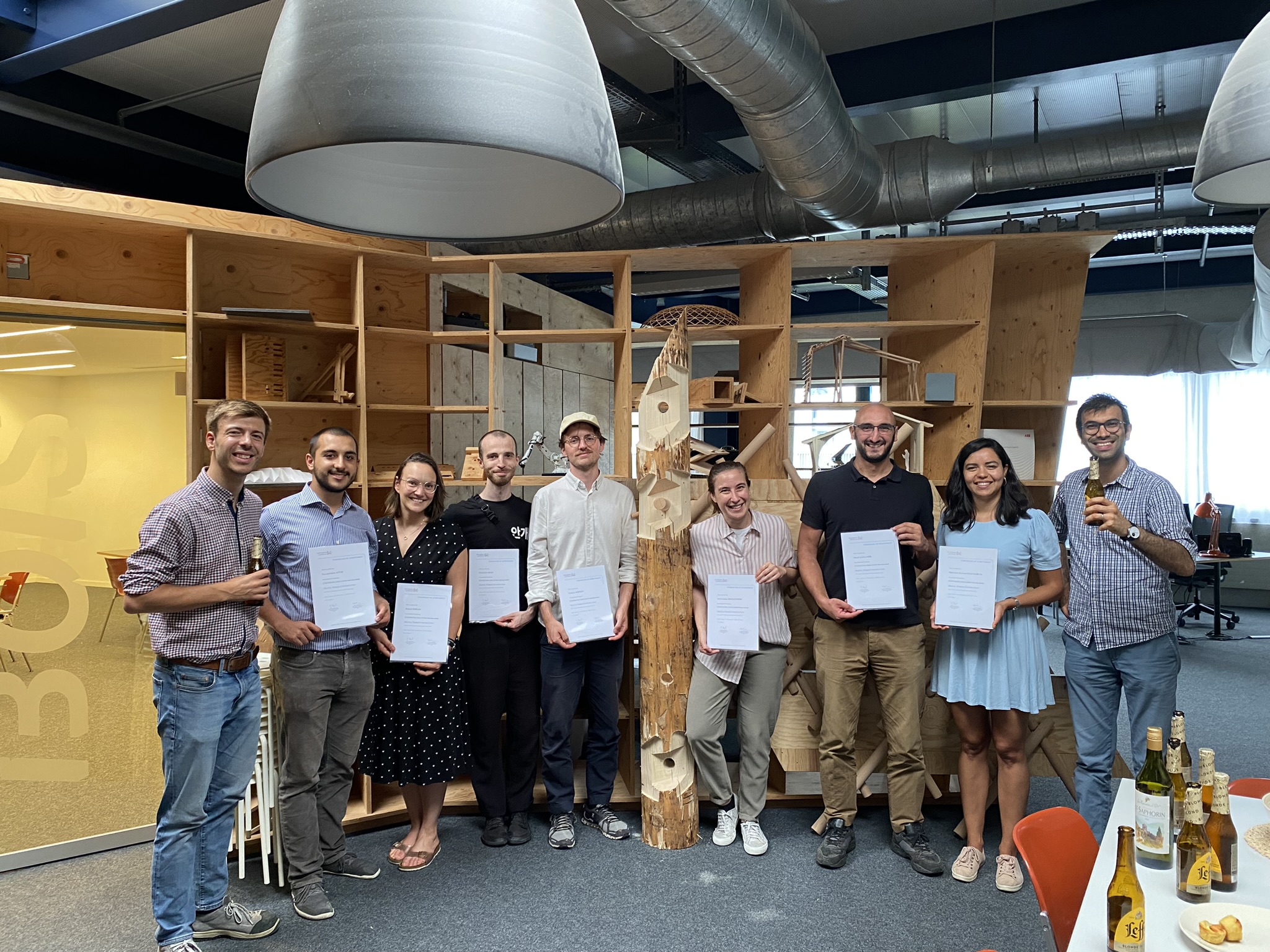
CivMin’s Prof. Aryan Rezaei Rad recently trekked to Lausanne, Switzerland to contribute to a trans-disciplinary, inter-institutional collaboration.
Utilizing his expertise in the field of timber engineering and digital fabrication, Prof. Rad and a team of architectural and civil engineering experts from École polytechnique fédérale de Lausanne (EPFL) designed a postgraduate course on advanced timber structures and digital design. The objective was to equip participants with cutting-edge knowledge and skills in computer-aided design and digital fabrication technology.
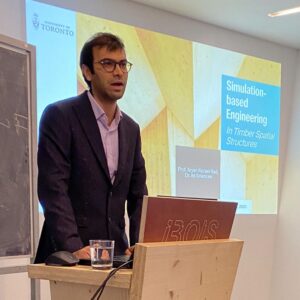
From June 23 to July 1, 2023, EPFL’s main campus bustled with activity as the four-day, in-person module took place at the Laboratory of Timber Construction (IBOIS). Led by Dr. Nicolas Rogeau, Dr. Petras Vestartas and Prof. Yves Weinand from EPFL, and CivMin’s Prof. Rad, participants were exposed to the latest design techniques and digital fabrication methodologies, covering everything from digital design to CNC fabrication and robotic assembly of structural elements.
Working at a 1:1 scale, participants were able to apply their newfound knowledge in practical and innovative ways. Prof. Rad played a pivotal role in instructing participants on digital structural design, utilizing open-source computational platforms, implementing computer-aided engineering for digitally-fabricated structures, and exploring the realm of Form-Force-Material optimization.
With a blend of online and in-person modules, the course attracted a diverse cohort of participants, consisting of a timber manufacturer, two professional architects, three professional civil engineers, and one civil engineering graduate alumnus aiming to offer an immersive and transformative experience for all involved.
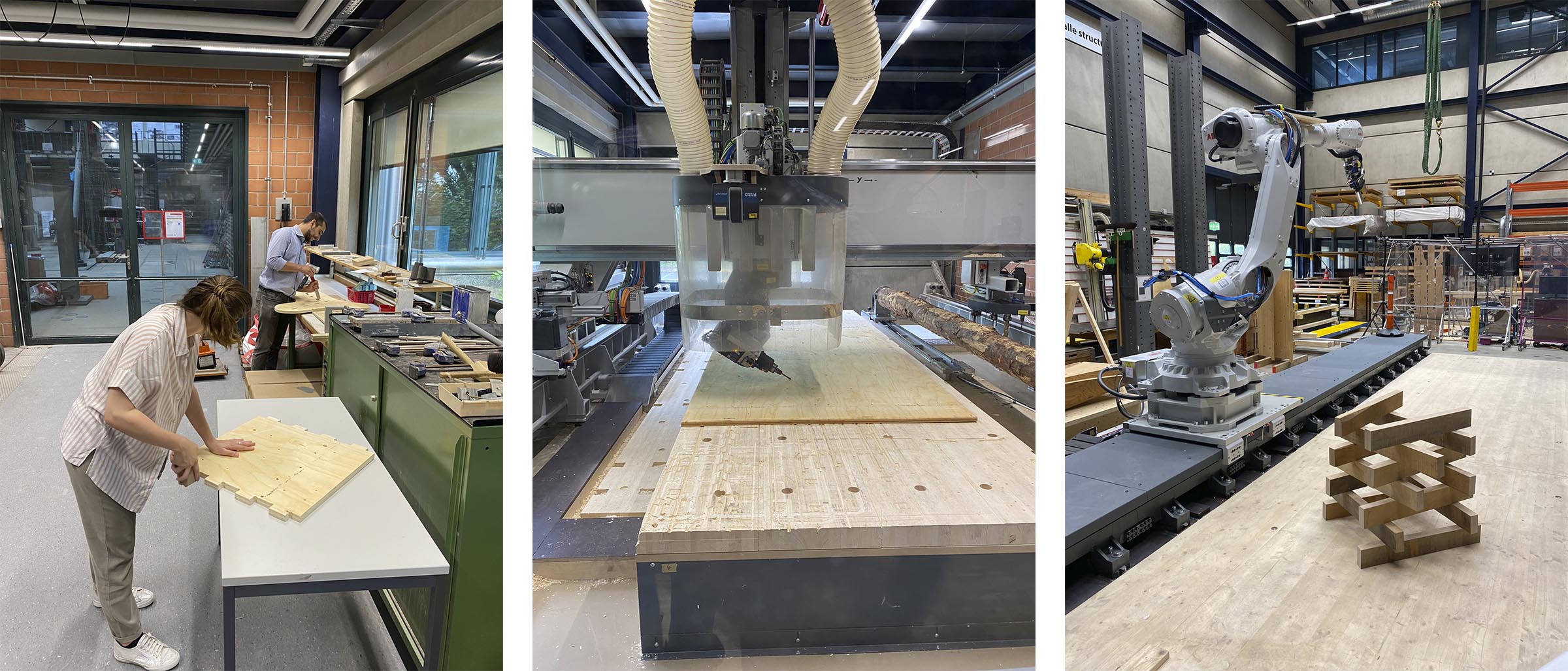
COMPAS RRC. (Photos provided)
The course on advanced timber structures and digital design has further solidified the trans-disciplinary, inter-institutional collaboration for pushing the boundaries of architectural and engineering education. With Prof. Rad from U of T and the esteemed team of instructors from EPFL leading the way, participants have gained invaluable skills and insights into the evolving field of timber construction, “We continue to foster innovation and provide professionals with the tools they need to create sustainable, efficient, and resilient structures with digital fabrication technology,” says Rad.
Rad recalls, “Lausanne experienced mostly sunny weather during the course, and EPFL’s beautiful surroundings provided the perfect environment for learning and networking while enjoying the great view of the Alps.”
By Phill Snel
Undergrad summer student research positions explored
The following is part of a series introducing CivMin’s undergraduate summer students to the Department and our greater community.
We explore the students’ projects, motivation and challenges, while providing insights into who they are, and what motivates them, beyond academia. It also highlights the multitude of ways summer research opportunities are approached and implemented under the guidance of our industry-leading CivMin professors.
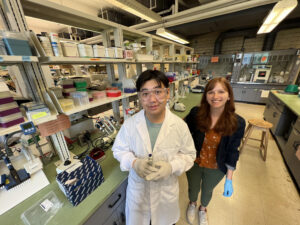
Gordon Tan’s father is a civil engineer. He grew up learning about indoor air quality, sparking his interest in this area. Now, as an undergraduate student, Gordon is doing summer research on mycotoxins and its impact on indoor air quality, under the supervision of Professor Sarah Haines. The literature on this research area is limited; for Gordon, this is motivation to further explore this topic area. He hopes to shine a spotlight on the importance of examining exposures in our indoor environment and to spark further research on mycotoxins.
Tell us a bit about yourself.
Gordon Tan: I’m originally from Vancouver. Last year was my first year at U of T in Engineering Science [EngSci]. At school, I’m a member of a few clubs, one of them being a machine learning club.
What will be your role this summer and where? What types of tasks and work will you be doing? What’s the research goal?
Gordon: I’ll mostly be working with mycotoxins, fungal secondary metabolites produced by mold/fungi. Exposure to these toxins may be associated with asthma and other respiratory diseases. The types of mycotoxins are countless, so we’re trying to identify the more prevalent types seen in indoor air. There is a gap in indoor air research related to mycotoxins. My focus is on the identification of mycotoxins in indoor air.
I’ll mostly be working on identification methods. We do have a chemical method called LC-MS [liquid chromatography-mass spectrometry] that has been previously used. However, I’m focusing more on a biological approach with ELISA [enzyme-linked immunosorbent assay], which uses antibodies to detect what we want to look for. In this case, mycotoxins.
What motivated you to work with Prof. Haines on this project?
Gordon: My father is a civil engineer, and he works with mold in buildings. He essentially does what Professor Haines researches, but he focuses on the mitigation aspect of it. He fixes buildings to prevent mold growth. Growing up, every time he would come home, he would talk about how poorly maintained this building was and how moldy this attic was. It’s something I grew up with – listening to my father talk about his work. So, I had prior knowledge of this type of work, and it really interested me. I thought about how I could build off of it…and potentially correct my dad sometimes. Essentially, my exposure to indoor air quality for many years kind of induced me to follow this route and try it out.
What do you foresee being your greatest challenge?
Gordon: My greatest concern is with resources, especially in such a new area of indoor air technology and indoor air quality. Our experimental tools are pretty limited and some of these tools are crucial for doing simultaneous identification of mycotoxins. The other one is time. I’m a summer student, so I’m only on a 13-week contract. As I realized recently working in the lab on a few DNA extractions, research takes a long time. I was helping a PhD student extract DNA from water and before we started, we had to disinfect collection containers using an autoclave. The disinfection took two and a half hours and then the experimentation took another three hours. It takes an entire day just to get your sample.
How do the gaps in indoor air research impact your work and/or drive?
Gordon: It’s motivation to explore the area. For the most part, we live and sleep indoors. Indoor air quality is something that’s very important, but few people consider as important. I feel that working on indoor air quality and mycotoxin research will bring it more significance, prompt more of a spotlight towards it and hopefully inspire others to do more research.
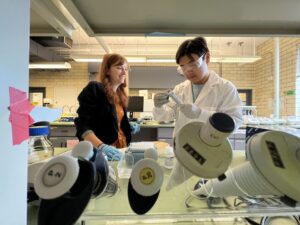
Have you found any favourite spots on campus?
Gordon: The Bahen Building. EngSci students have our own common room there on the second floor. The Bahen basements are also nice, especially when it’s crowded because no one goes there even though there are workstations. And then you have the third floor, which is also empty when it’s crowded on the main floor.
Do you have any interesting hobbies or talents you’d like to share?
Gordon: I have three main hobbies. The first one is biking – I really like road biking. My dad brings me on these tours with lots of exploration. The second one is the piano, which I’ve been playing for 12 to 13 years. There’s just something nice and relaxing about playing when I get home. And then, the last one is skiing. In Vancouver, there are a lot of mountains and the views are awesome, especially when the sun is setting.
Research is something I recommend to any undergraduate student.
Is there anything I haven’t asked you about you’d like to speak on? Final thoughts?
Gordon: Research is something I recommend to any undergraduate student, just try it out – it’s new, it’s refreshing and you get to work with cool equipment. You’ll enjoy it, even if it’s just over the summer or for a very short term.
Prof. Haines, what do you hope for Gordon to achieve this summer? Any major takeaways?
Prof. Sarah Haines: Gordon is fantastic. You can see he has so much passion and knowledge about indoor air. Usually, undergraduate students come in and don’t have experience studying the built environment, however, Gordon already had some pre-existing knowledge, which was great. This summer, I’m hoping Gordon can gain some initial lab experience. Learning how to use pipettes and basic quantification equipment, for example. In our research, we do a lot of microbiology work, so getting those basic laboratory skills are important.
As Gordon mentioned, he’s working with Nehul Agarwal [PhD candidate] and Zoe Haskin [MASc candidate], where he will be trained on how to perform DNA extractions and quantification using quantitative PCR, and new digital PCR equipment we’re purchasing. Those are the basic kind of skills I’m hoping he’ll be able to learn while also exploring the detection and identification of indoor mycotoxins in dust. The work Gordon completes this summer will be the starting point for further research.
How will Gordon be contributing to this project/your research?
Prof. Haines: Gordon’s main work will be on this mycotoxin project. He’s going to pursue more research into using an ELISA for mycotoxin detection. For my set of research, it’ll be helpful to get this basic knowledge. He’s also doing a literature review on current work so we can move forward with some longer-term studies. We’ve been having initial conversations with Bridget Hegarty, a researcher and professor at Case Western Reserve University in Cleveland, Ohio, which is where I’m from. They’re also exploring research into mycotoxins, so there may be some potential for international collaborations. Gordon’s also working with some PhD students, being trained on what they’re doing and helping move their projects forward.
I believe undergraduate research is so critical and important.
Is there anything I haven’t asked you about you’d like to speak on? Final thoughts?
Prof. Haines: I believe undergraduate research is so critical and important. I would not be here if I didn’t do undergraduate research as a student. I was in my third year when I started working in a lab. I ended up staying and working there for my master’s and my PhD. It was such a wonderful experience. And I do agree with Gordon, students should have that opportunity and be able to explore if it’s something they want. Especially for our Engineering students, it’s so critical to have that experience.
By Rachael Gallant
Read more about our CivMin summer research students here.
July 13, 2023 | CBC/Radio-Canada (French)
CivMin Professor Oh-Sung Kwon is among three professors who recently received grants to study various aspects of this emerging technology
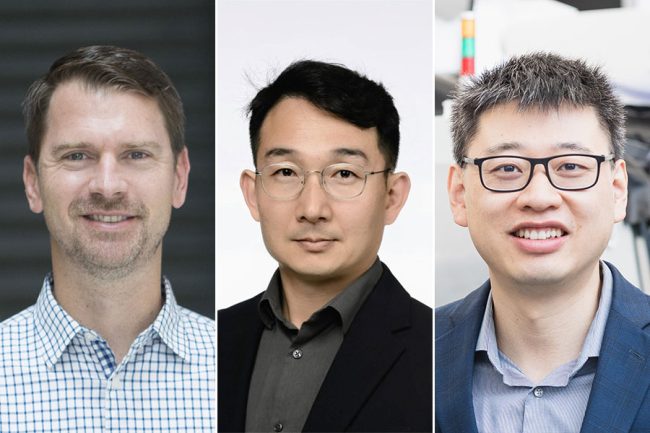
Small modular reactors (SMRs) represent a new paradigm that could change how and where nuclear power is used to meet our energy needs — and U of T Engineering research could help point the way forward.
Professors Greg Jamieson (MIE), Oh-Sung Kwon (CivMin) and Yu Zou (MSE), recently received funding from the NSERC-CNSC Small Modular Reactors Research Grant Initiative. Over the next three years, each of them will be leading a project that seeks to improve the design of SMR technology, from the materials used in their manufacture to the ways in which they are operated.
“Canada has a long history in the nuclear space, and a lot of experience building and operating nuclear power plants,” says Jamieson.
“So far, these have all been large facilities designed to meet the needs of major population centres. But we also have many communities and natural resources that are located hundreds or thousands of kilometres away from these big cities. With a geography like that, SMRs start to make a lot of sense.”
While there are currently no SMRs in commercial operation, several companies and organizations around the world are working on pilot facilities to demonstrate proof-of-concept. For example, Ontario Power Generation has begun site preparation activities for an SMR project at its existing Darlington site in the Greater Toronto Area.
These plants would be small — producing less than 300 megawatts of power, as compared to two or three times that amount from Canada’s existing plants — and built with pre-fabricated components that could be shipped to remote locations and assembled on site.
Since they operate without producing any greenhouse gas emissions, SMRs are seen as a potentially cleaner replacement for the diesel generators that are currently the industrial standard in remote locations. And electricity isn’t all they produce.
“Like all nuclear plants, SMRs generate heat, which produces the steam that is used to run the turbines,” says Jamieson.
“But you could also use this heat in other ways: for example, district heating, or for industrial processes such as hydrogen generation or the early stages of oil sands processing. There are a lot of possibilities.”
As a human factors researcher, Jamieson will be focusing on how the plant’s operators will monitor and control the technology. His project builds on some of his previous experience with the nuclear industry, but also represents a contrast to current industry standards.
“Large nuclear plants have operating procedures oriented around a single crew of operators monitoring a single reactor,” says Jamieson.
“But small modular designs open up new possibilities, such as a single crew monitoring multiple reactors, which raises questions about how you distribute human attention.”
Many proposed SMR systems also include what is known as ‘inherently safe design.’ This means that systems are designed to passively shut down if operating conditions deviate from normal.
“Inherently safe design is a good idea, but we want to understand if there are situations where operators, possibly as a result of misinterpreting data, might mistakenly override those systems,” says Jamieson.
“This is something that was a factor in previous nuclear accidents, such as at the Three Mile Island facility in the U.S.”
In addition to differences in their potential modes of operation, SMRs might also require the use of different materials than current reactors, ones that can stand up to harsher working environments. This aspect is the focus of Zou’s research project.
“In today’s reactors, water is usually used as the cooling fluid,” says Zou.
“But many SMR designs use molten salts as the coolant, which can be more corrosive than water. Other designs use water, but they operate at much higher temperatures and pressures than traditional reactors. This means that the pipes, heat exchangers and other components need to be able to stand up to much harsher conditions.”
Zou and his team are working with collaborators at Natural Resources Canada and Dalhousie University to study how various materials might react to these tougher conditions. These might include nickel or iron-based alloys in common use today, but they will also consider new materials, such as high-entropy alloys, that haven’t been used for these applications before.
Components for SMRs could be made via additive manufacturing, also known as 3D printing. This method, which Zou’s team has expertise in, can significantly reduce the time from the development to the production.
The team will conduct physical experiments in the lab to test the mechanical properties of these materials, then feed the results into a set of computer simulations. Those simulations, in turn, will inform the development of future lab experiments in an iterative approach.
“Our goal is to build up a database that could be consulted by the designers of future SMRs,” says Zou. “It would also help regulators, as the lack of data about material behaviour under the relevant conditions makes it hard to assess safety.”
For their part, Kwon and his team are looking at how SMRs might react to seismic activity.
“Seismic analysis involves looking at how vibrations caused by seismic waves will affect a structure, including whether or not there are resonances that would amplify the effects of these vibrations,” says Kwon.
“In the case of a nuclear plant, we are interested not only in how vibrations might affect the building itself, but also the equipment within the building.”
One of the factors that Kwon and his team are focusing on is the properties of the soil underneath the reactor and containment buildings.
“Today’s plants undergo a lengthy site selection process that ensures they are seated on stiff, compacted soil that will not liquify in the case of a seismic event,” he says.
“But SMRs are designed to be shipped to remote locations, where there is less choice about where to situate them, so they may have to be designed to work on softer soils. In Canada’s North in particular, they might be seated on permafrost. If climate change causes that permafrost to melt, it could affect the seismic resilience of the facility.”
While SMRs are still a long way from widespread application, research from projects such as these can inform their development and keep Canada at the forefront of innovation in this dynamic sector.
By Tyler Irving
This story originally published by Engineering News